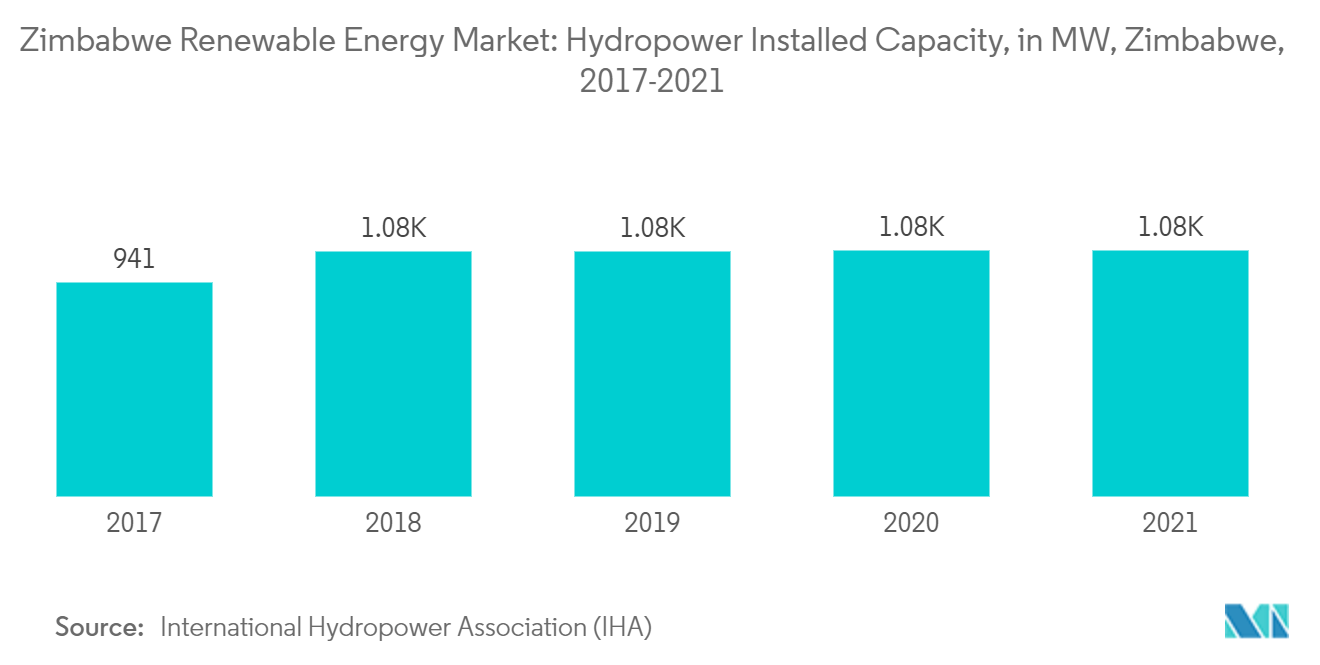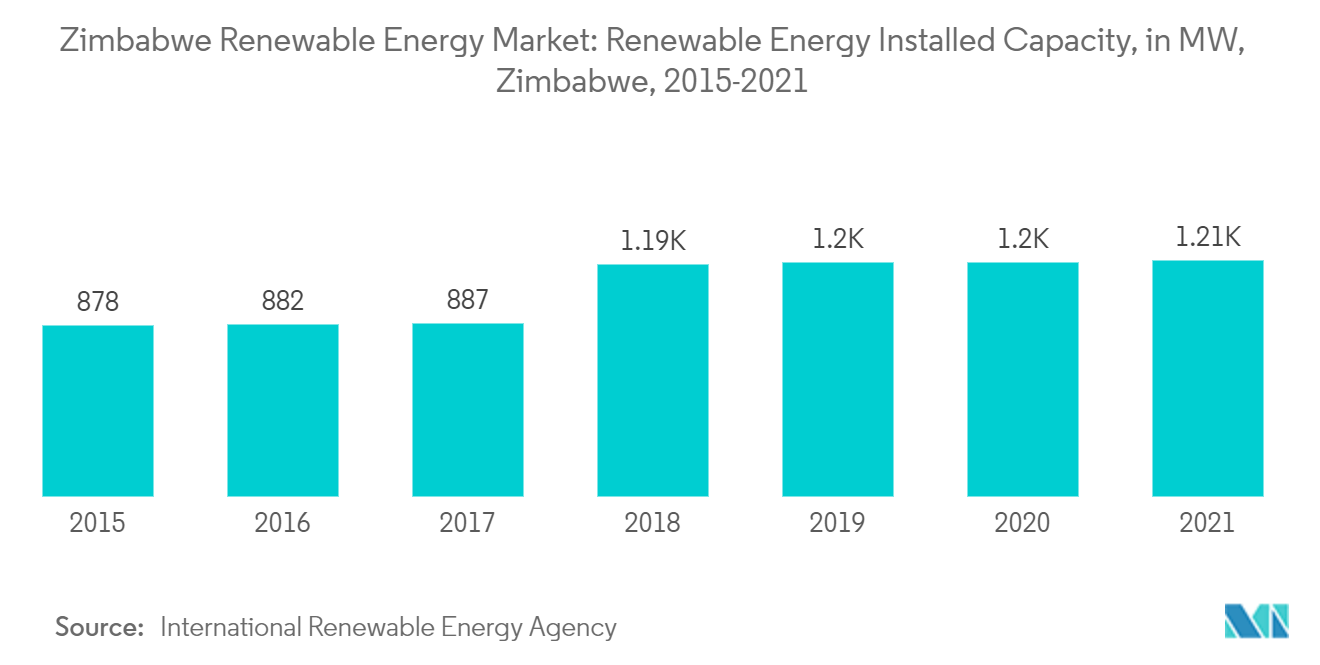Market Trends of Zimbabwe Renewable Energy Industry
This section covers the major market trends shaping the Zimbabwe Renewable Energy Market according to our research experts:
Hydropower Source to Witness Significant Growth
- With rapid economic development and insufficient energy supply, hydropower plays a bigger role and has immense potential to cater to the energy demand in Zimbabwe. According to International Hydropower Association (IHA), in 2021, the installed hydropower capacity in Zimbabwe was 1,081 MW which increased by approximately 15% as compared to 2017 (941 MW).
- Zimbabwe relies heavily on hydro-powered resources to generate electricity. As per the International Renewable Energy Agency (IRENA), Zimbabwe generated around 7 TWh of electricity in 2021 via hydro-powered resources, accounting for 58.2 % of the total electricity generated in the country.
- The Zambezi River holds a substantial amount of Zimbabwe's hydropower potential. Since 2018, the government has met about 80% of its hydroelectric needs from the Kariba South Bank power facility on the Zambezi River. However, the biggest difficulties in establishing reliable hydropower output are the country's inadequate electrical system, a lack of funds for maintaining and constructing more hydropower stations, and erratic weather conditions caused by climate change.
- Additionally, the 2,400 MW Batoka Gorge hydropower project, jointly owned by Zambia and Zimbabwe, is expected to begin construction in 2023. The project has been in plans since 2012 but never materialized due to the lack of funding. But in August 2022, both countries held meetings and started arranging finances for the project. Investment in the project is estimated to be around USD 4.5 billion. It is likely to generate a revenue of more than USD 750 million annually, thus enhancing the GDP of Zimbabwe and Zambia.

Favorable Government Policies Driving the Market Demand
- Zimbabwe's renewable energy market is expected to grow steadily in the future due to supportive government initiatives to increase power generation in the country. The government of Zimbabwe has increased its focus on increasing power generation capacity by integrating renewables into the mix.
- As of 2021, the installed renewable energy capacity was 1,211 MW compared to 878 in 2015. The installed capacity in the country has increased by almost 38%. A similar trend in growth rate is expected during the forecasted period.
- Zimbabwe's increased economic activity in various sectors, including housing development and construction, has fueled a demand for energy and electricity demand in general. The Government of Zimbabwe estimates the surge in power demand to peak at 2000 MW in 2023, as compared to 1200 MW in 2021.
- In January 2021, the Ministry of Finance and Economic Development rolled out its National Development Strategy (NDS) Phase 1, which will run from 2021 to 2025. In this plan, the government has aimed to increase the electricity supply to 3467 MW by 2025 as compared to 2317 MW in 2020. Out of the 3467 MW, the government aims to generate 1100 MW via renewable energy sources.
- Moreover, the NREP (National Renewable Energy Policy) also aims to have installed 250,000 solar geysers by 2030 in new and old buildings, to increase the use of institutional and domestic biogas digesters, to deploy the use of solar mini-grids, off-grid solar solutions and solar water pumping solutions, and generally to increase the use of renewable technologies. Moreover, the policy aim is to increase electricity penetration rates in rural and urban areas.


